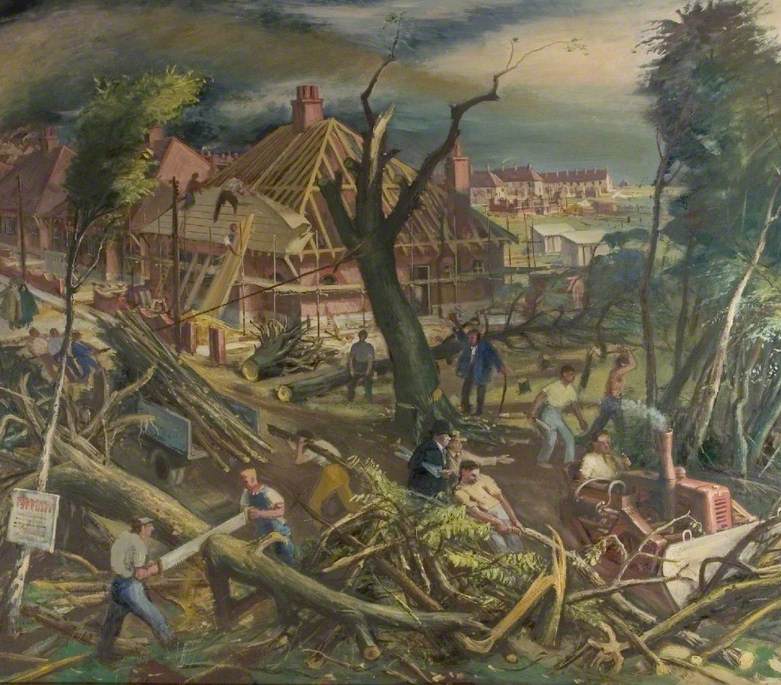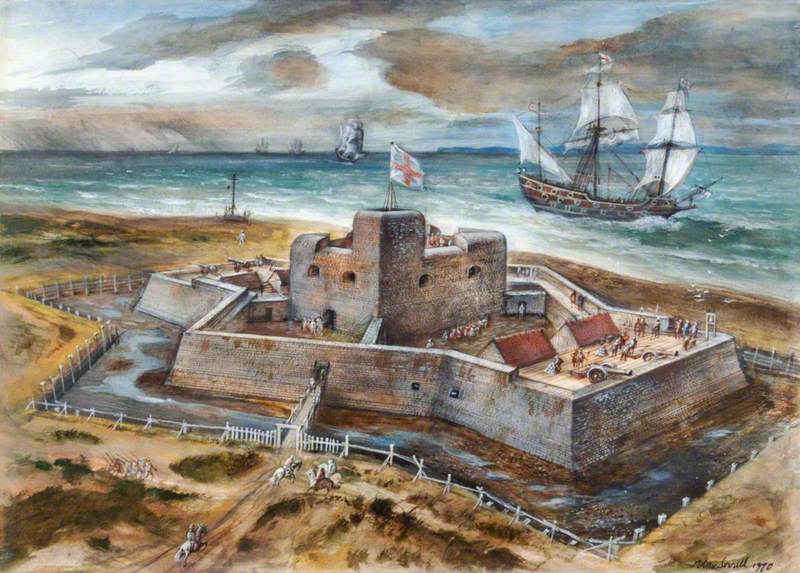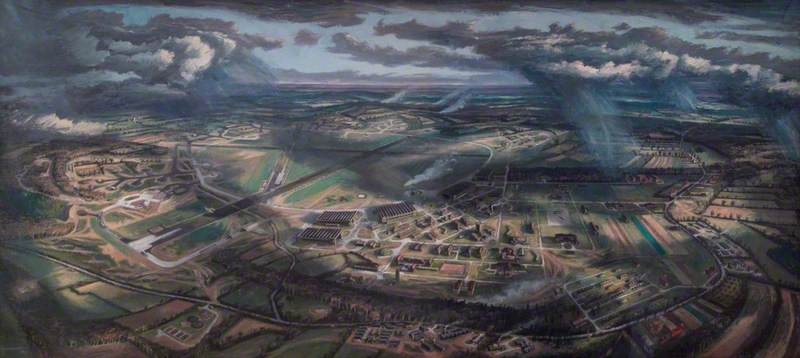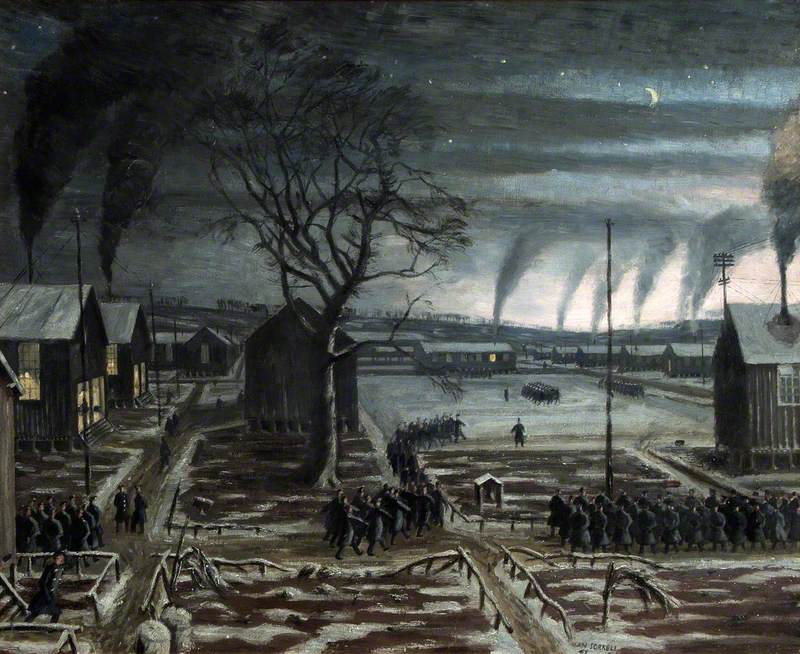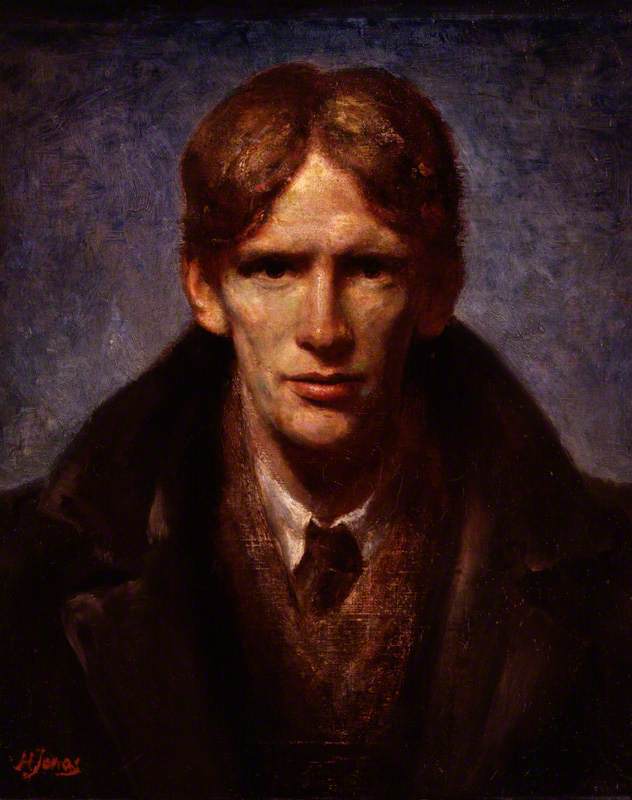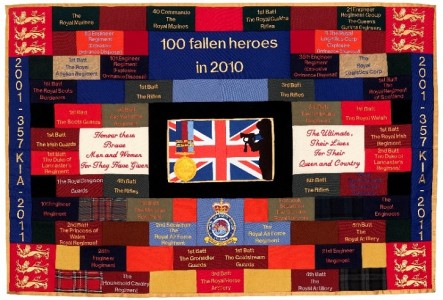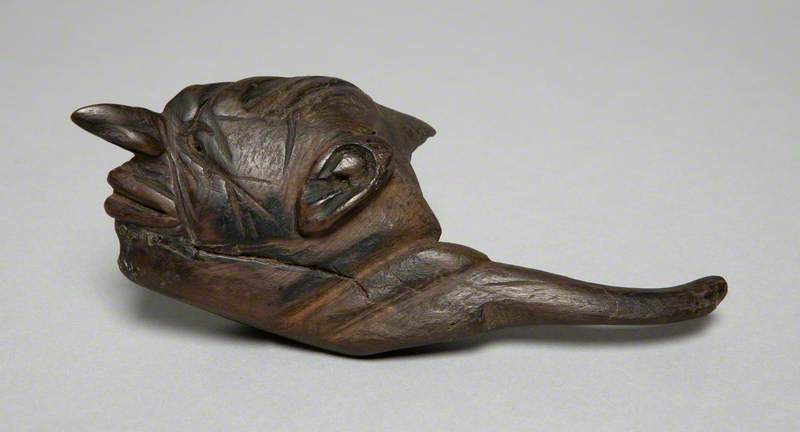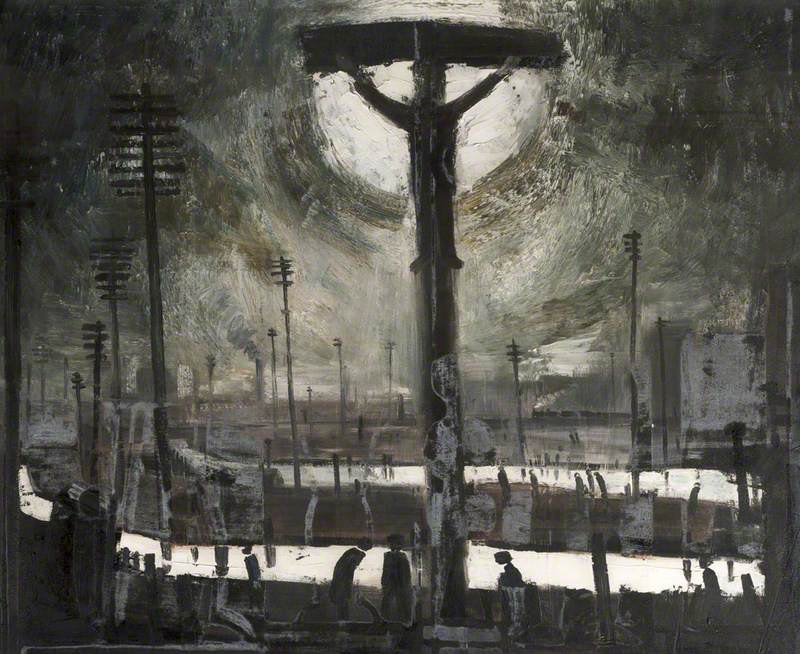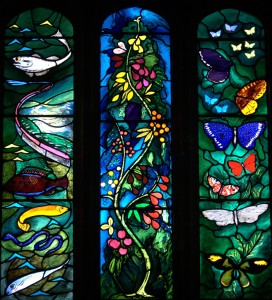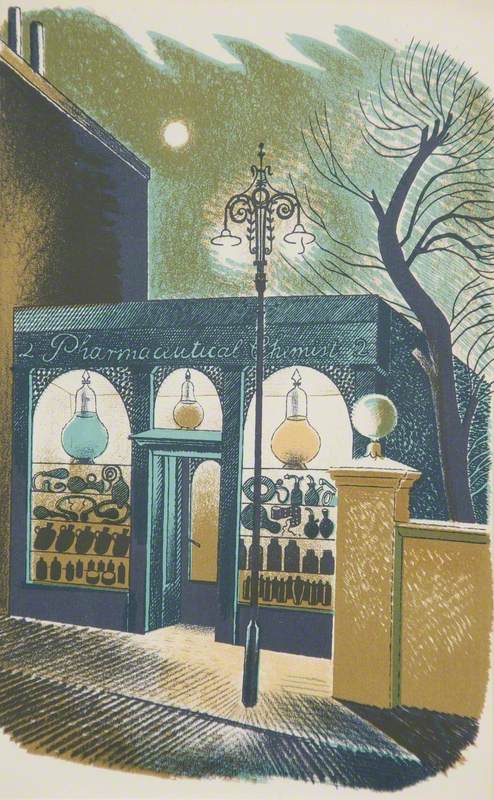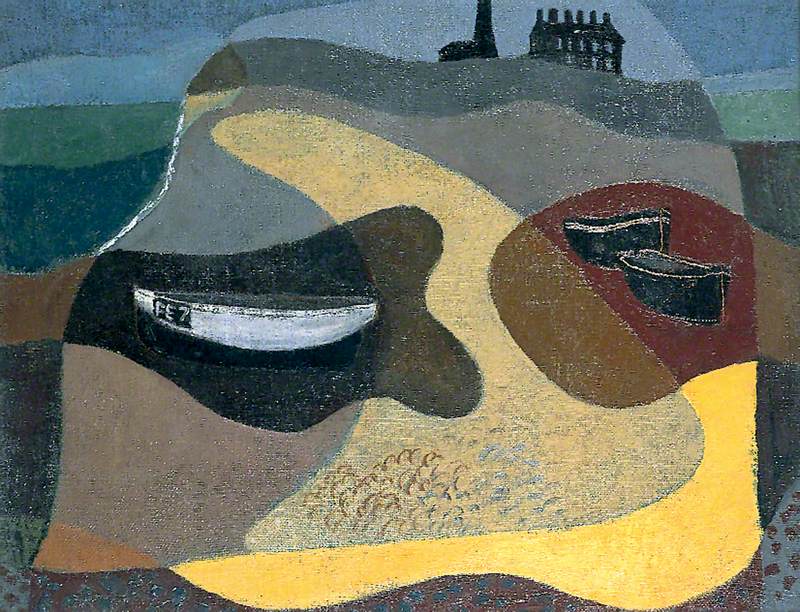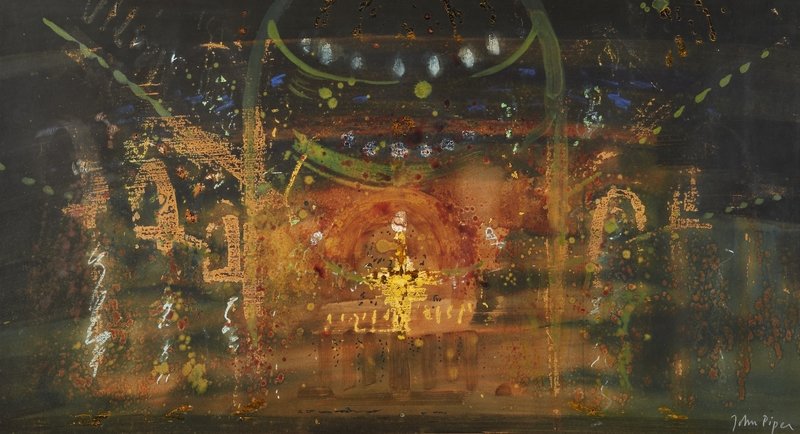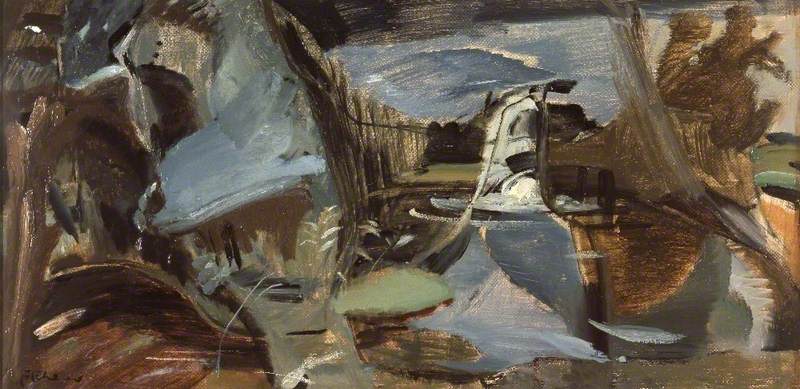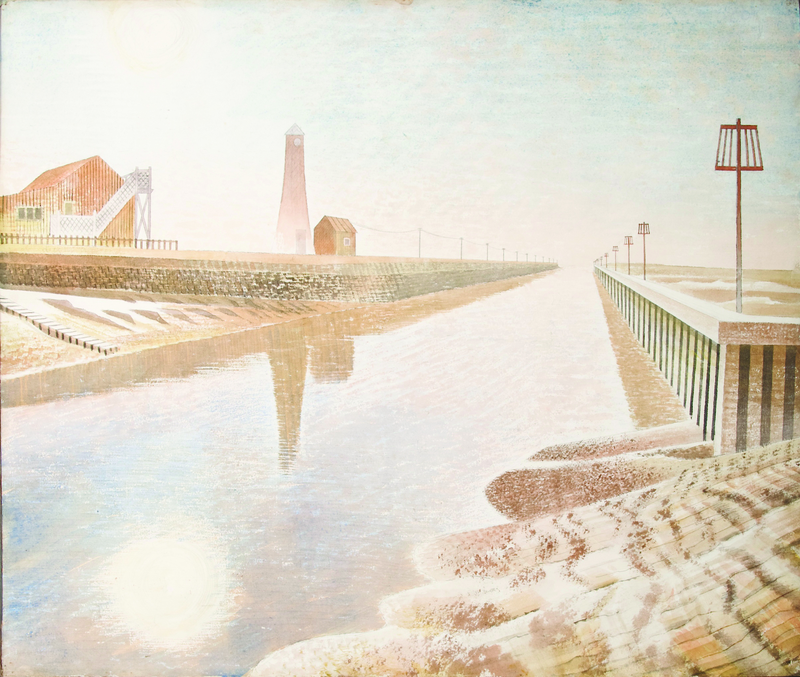Alan Sorrell (1904–1974) is principally remembered today for his reconstruction drawings of historic sites and monuments, and tableaux of ancient life. These appeared in the Illustrated London News and in books ranging from those on Roman Britain to the Holy Bible, and were circulated widely on postcards for sale at archaeological sites and museums.
Whilst always carefully researched for accuracy, his distinctive style, with stark contrasts of light and dark and with impending storms spread above bird's-eye views, still conjures up potent memories and strong associations for a generation of archaeologists and a wider public.
Sorrell's reconstruction drawings, however, have dominated public perception at the expense of other aspects of his art. An artist of wide-ranging talents, Sorrell played out his particular vision as a commercial artist, a student and teacher at the Royal College of Art, a Rome Scholar, a war artist, and as a remarkable mural painter (20 major cycles).
Like Eric Ravilious and John Piper, Sorrell studied at the Royal College of Art in the 1920s when it was enjoying a period of almost unprecedented artistic creativity under its forward-looking Principal, Professor William Rothenstein.
In 1928, Sorrell was awarded the much-coveted Rome Scholarship in Decorative Painting, the purpose of which was to expose young artists to the great mural cycles of Italy in the hope of inspiring emulation.
In Italy, Sorrell made copies of Renaissance paintings and developed his skills in composition, resulting in a remarkable series of imaginative compositions inspired by his Roman experience.
On his return from Rome, Sorrell joined the teaching staff at the RCA and received his first major mural commission for Southend Public Library. During the Second World War he enlisted in the RAF and became a part-time war artist. The paintings he produced, recording daily life in wartime Britain filtered through his direct experience as an airman and through his neo-romantic vision, have left a unique record of this poignant moment in British history. These can be seen amongst the works displayed on Art UK, and will come as a revelation to those not familiar with Sorrell's work.
The work of the Rome Scholars such as Sorrell had a distinctive character; closely attached to the symbolic and narrative traditions of the past, their paintings have in common a highly finished realism tempered by an underlying poetic vision. Art UK has played a vital role in bringing back into public awareness the work of lesser-known artists of the interwar years – the Rome Scholars produced some of the most complex and enduring images of their age and together represent one of the most fascinating but least documented chapters of British twentieth-century art.
Sacha Llewellyn, Liss Llewellyn Fine Art
Further reading
Sacha Llewellyn & Richard Sorrell (ed.), Alan Sorrell – The Life and Works of an English Neo-Romantic Artist, Sansom & Co., 2013 (Contributors: Sacha Llewellyn, Paul Liss, Richard Sorrell, Peyton Skipwith, Brian Foss, Alan Powers, Sara Perry, Matthew Johnson and Ian Sanders)
